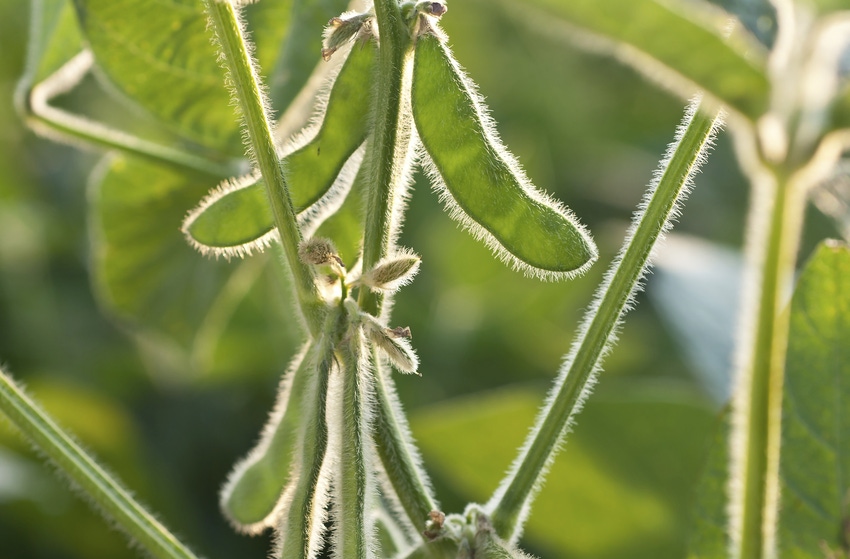
September’s Quarterly stocks report of U..S agricultural inventory at marketing year end fell well below trader expectations. As a result, soybeans were up 40 cents and corn jumped nearly 20 cents at one point.
Soybean stocks at 523 million bushels were well below trader expectations and 42% below last year. Corn stocks just shy of 2.0 billion bushels were 200 million bushels below last year and the lowest stock since 2015. AgMarket.Net was not too shocked by these numbers as we have been saying for the last year that stocks were smaller than what we were trading, as evidenced by strong cash markets and unusually high basis.
These numbers still represent a comfortable supply for old crop but have potential game changer implications when carried into the new crop.
Soybeans cross threshold
When we reduce last year's carryover to 523 million bushels, the reduced new crop carry cuts supply and 2021 soybean stocks are expected to be 360 million bu. versus 460 million bu. currently on USDA's books. That change pushes stocks to use ratios below 10% putting U.S. stocks into a small group of historical years where stocks were considered tight.
These stocks correlate well with a price value of $10.50 - $11.00.
If actual yields come in below the 10% expected increase from last year that USDA is assuming, then a lower yield adjustment would push these stocks potentially below 300 million bushels. If that were to happen prices would most likely exceed $11 per bu.
South America weather will also be critical as they are off to a very dry start as is other parts of the world like Russia, Ukraine in parts of Europe.
Soybeans have crossed through the key $9.85 price threshold, verifying that the uptrend is strong as long as that price holds.
Funds are long over 200,000 contracts which is very large for this time of year. However the dynamics of a demand curve pushing out and a supply curve coming down suggest little reason to see mass liquidation of these positions.
China has bought 20.5 million metric tons of US soybeans plus unknown categories 10.6 million metric tons for a total of 31 million metric tons of soybeans bought year to date. This is approximately 69% more sold then year ago levels and suggests the only risk to demand is if China were to start cancelling and we do not expect that. Additionally, the end user seems to be relatively short bought compared to normal for this time of year which has kept basis levels very good in many areas. Quick-ship premiums have fallen to the sidelines as expected but the overall demand remains firm.
Our clientele has done a great job of holding on. Now they are selling cash beans and replacing ownership with a lower risk option position. The specifics of these option positions will differ from one client to a next based on where the market is at the time of the transaction and the risk tolerance of the client . However most of the positions establish an upside gain potential of $1 to $1.60 per bushel.
In an up market, have no ownership has the market moves down with some positions kicking in with ownership if the market sells off by $0.60. Thus we are maintaining ownership for an additional move higher, reducing our risk if the market moves lower, all for a cost much less than storing the beans.
CORN-fused
It is still very difficult to try and explain why USDA has been so confused on getting corn numbers right. Throughout last year we knew UDA’s acreage, yield, and demand numbers never match up with all the information we had at our fingertips. The NASS inventory report resolved much of those disputes with inventory coming in just under 2 billion bushels. This reflected a smaller crop and larger demand vs the USDA World Ag Board Supply/Demand reports.
The interesting effect this has is when you carry 2 billion bushels into new crop supply demand tables, you automatically lose 250 million bushels for the 20/21 carryover.
Another mystery about USDA WASDE is Chinese demand. Current Chinese purchases of U.S. corn are a little over 10 million metric tons; plus, we believe China has bought nearly 6 million tons from other suppliers. This total of 16 million metric tons of corn to be imported by China compares with the 7 million metric tons USDA still has in the WASDE report. At some point in time USDA has to correct this conflict and in doing so will have to increase US exports to reflect actual sales. This adjustment could push new crop carryover below 2 billion bushels. The next adjustment that may need to be made is yield as year to date yields are coming in 2.4% below USDA's projected 6.6% increase over year ago. That adjustment will tighten stocks into a category considered cautiously tight. With a record load out schedule for our export facilities, we suspect basis along the River and trains to PNW to remain very strong.
In addition to the tighter supplies as discussed above, we suspect the funds will begin building a long corn position as these numbers become revealed and fiscal stimulus creates a more inflationary environment. Corn is historically a market that has very little elasticity when stocks are tight especially when the dollar is weakening, and the feds are boasting a liquid fiscal policy.
It would only take a spark (like poor South American weather) for this combination of factors to create a super cycle in corn.
Thus we have recommended to all our clients to bin every bushel you can. For grain that must be sold in the fall, we are suggesting you replace with re-ownership. As with soybeans that strategy will vary depending on the client and risk tolerance.
For information and explanations of these strategies, AgMarket.Net produces a weekly video conference Monday afternoon. You can sign up for this at no cost by simply calling our office at 844-424-6758 and request to sign up for our weekly video.
Hope everyone has a safe and enjoyable harvest season.
Reach Bill Biedermann at 815-404-1917 or [email protected]
The risk of loss in trading futures and/or options is substantial and each investor and/or trader must consider whether this is a suitable investment. AgMarket.Net is the Farm Division of John Stewart and Associates (JSA) based out of St Joe, MO and all futures and options trades are cleared through ADMIS in Chicago IL. This material has been prepared by an agent of JSA or a third party and is, or is in the nature of, a solicitation. By accepting this communication, you agree that you are an experienced user of the futures markets, capable of making independent trading decisions, and agree that you are not, and will not, rely solely on this communication in making trading decisions. Past performance, whether actual or indicated by simulated historical tests of strategies, is not indicative of future results. Trading infromation and advice is based on information taken from 3rd party sources that are believed to be reliable. We do not guarantee that such information is accurate or complete and it should not be relied upon as such. Trading advice reflects our good faith judgment at a specific time and is subject to change without notice. There is no guarantee that the advice we give will result in profitable trades. The services provided by JSA may not be available in all jurisdictions. It is possible that the country in which you are a resident prohibits us from opening and maintaining an account for you.
The opinions of the author are not necessarily those of Farm Futures or Farm Progress.
About the Author(s)
You May Also Like






